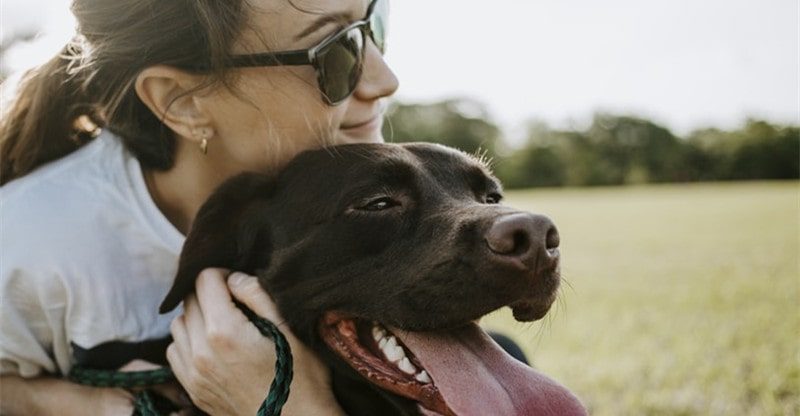The Pursuit of “Man’s Best Friend”: 7 Tips for Building a Bond With Your New Puppy
Adopting a puppy is an unbeatable adventure, but first-time dog owners plunging into puppy parenthood may encounter some unexpected worries along the way: “Will my dog like me?” “How will I keep my dog comfortable at home?” “How do I bond with my new puppy?”
If pre-puppy jitters have gotten the best of you, review these tail-wagging tips and tricks for building an unbreakable bond between you and your furry companion.
1. Acknowledge that your puppy’s temperament will play a pivotal role
Different dog breeds generally exhibit different temperaments. While dogs of any breed can undergo training to promote good behavior, select dog breeds tend to have more outgoing personalities from the get-go.
While several dog breeds are known for their pleasant temperaments, Labrador Retrievers are known for their loving, personable nature. For someone looking for a working dog (a seeing-eye dog, a hunting dog, or a rescue dog), a Lab is an excellent choice for soon-to-be puppy parents with rigid wishlists.
While checking your local animal shelters for available lab puppies is a recommended first step, the adopt vs. shop tug of war may make you realize that buying from a breeder is the best course of action. If you’re in the market for white Lab puppies for sale, a quick search through your go-to search engine could mean the difference between dampened spirits and wet-nosed kisses.
2. Go easy on the punishments
Your dog is going to make mistakes and will frustrate you at times. Make sure to remind yourself that the training process takes time and that your dog will never be completely perfect. While discipline will be called for at times, don’t be rough with your puppy, or you will have a much harder time building trust and a sense of friendship.
3. Set aside time to bond
Consider taking a week off of work after you bring home your new puppy. Being present 24/7 in the early training period will not only make your pup feel more comfortable, but this around-the-clock attention will help cement a connection between you and your canine companion.
Experts recommend that you refrain from going out of town without your dog for a few months after adoption. After spending a few months bonding with your pup, you might decide that they’re ready to tag along for your adventure abroad.
4. Keep a consistent schedule
Establishing and maintaining a consistent schedule with your puppy will show them that you can be counted on for food, water, bathroom breaks, and care. A routine establishes trust, supplements training efforts (especially potty training), and acclimates your dog to their new home.
Taking a week off from work will give you time to introduce, acclimate to, and maintain a schedule for your pup’s day-to-day life. Set alarms on your phone and stay rigid for the first few weeks of parenting.
5. Set up a safe place
Setting up a safe place in your home where a dog can take refuge to sleep, play with their toys, eat, or simply hang out is an excellent way to foster trust with your new pet.
Some dog parents choose to crate train their pups. Crate training is useful for a variety of reasons:
- It establishes a safe, comfortable space for your pet to relax.
- It gives pet parents peace of mind that their dog is safe when unattended.
- It helps establish a routine like a sleep schedule.
While some puppies adapt to crate training faster than others, it’s a great way to communicate to your dog that their crate is a safe place, not a site of punishment.
6. Go on adventures together
For much-needed mental stimulation, add a daily adventure to your routine like a walk, a trip to the dog park, or a visit to a dog-friendly restaurant or bar.
A daily activity outside of the house (especially one where your pet may encounter other people or other dogs) is excellent for building socialization skills (with both people and dogs), practicing leash training, and reinforcing the commands your dog is learning.
But, an underappreciated benefit of a daily adventure is the return home. After returning home from a high-energy activity a few days in a row, your dog will associate both you and your home with consistency, comfort, and relaxation.
7. Consider whether or not you’re ready for a dog before you adopt
If these dos and don’ts of dog life make puppy ownership sound like a big commitment, that’s because it is one. If you can’t take a week off of work to acclimate a puppy to both you and their new home, or if you’re not home enough for your dog to have an enriching life, you should consider adopting a different pet.
Bonding with a dog is a lot like bonding with a human. It takes time, effort, and maintenance. If you’re not ready to commit to the work of dog ownership, adopting a puppy will be a detriment to the quality of life of both you and your dog.
Final thought
While bonding with a puppy can sound intimidating, following the tips above should ensure a smooth transition from the animal shelter or breeder into your home, quick and efficient bonding, and successful training.
When puppy parents invest in bonding time with their new pet, they’ll gain a permanent friend for many years to come.



